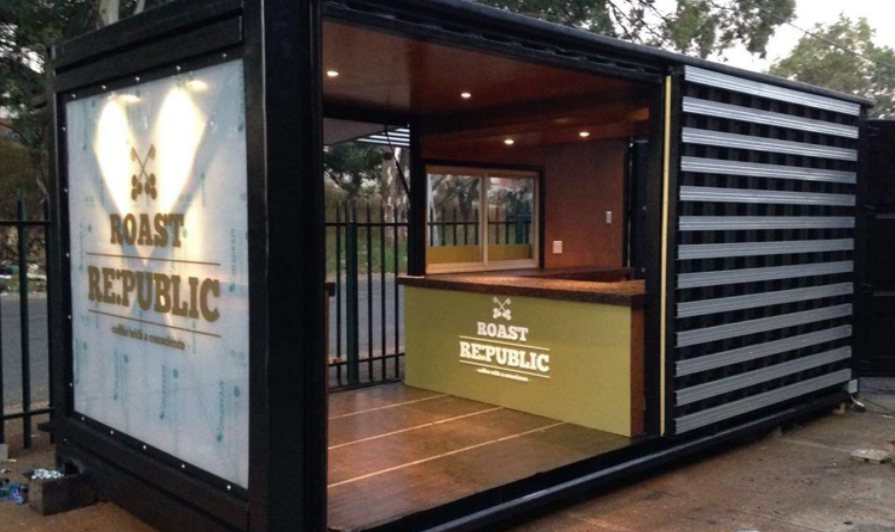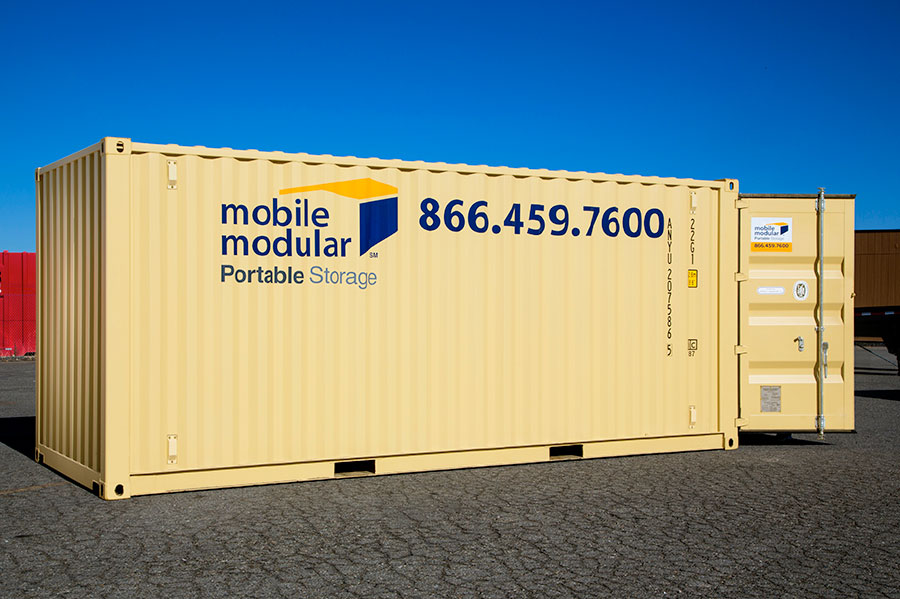- Rent, Lease, or Purchase
- |
March 23, 2022
Shipping Container Shelves
Steel shipping containers come in a variety of shapes and sizes. Their versatile structure also allows for ample customization options and accessories to further improve functionality and efficiency.
Installing storage container shelves is just one way to do so. For example, a 40-foot shipping container offers about 2,387 cubic feet of storage volume sufficient for holding bulky products.
By modifying the interior with shelving brackets and pipe racks, you can preserve some of that precious real estate.
Let’s take a closer look at how to install container shelving and the benefits of doing so.
Types of Shipping Container Shelving
Depending on the weight, size, and quantity of product you want to store, you can select any of the following shelves:
Shelf Brackets

Brackets are wall extensions that carry a construction-grade wood plank. Shelf brackets or shelving brackets come in various configurations, such as a three-shelf unit, four-shelving bracket, etc. You’ll need two brackets to make a single shelf or one pair for every shelf level you create.
Brackets have a load rating of about 1000-1200 lbs. per bracket, making them ideal for rigid stock storage.
Pipe Racks

Pipe brackets are arms that extend out from the container wall at about 30° angle. They have a similar load rating as brackets. However, they have an open space between the arms instead of shelves.
If you want to hold pipes and other long objects, pipe racks are the perfect solution.
Loft Bracket
Loft brackets span across the width of the shipping container, with one pivot point on each wall. They carry a single shelf that hangs close to the ceiling. This option is best for when you want to store dead stock that isn’t often used.
T-Bar Shelf
T-bars are metallic support structures in the shape of a 'T.' A pair of T-bars help support a single shelf or a foldable table. Alternatively, you can use T-bars in conjunction with a shelving bracket to increase the load-carrying capacity of the rack.
How Can I Install Shelves in Storage Containers?
Installing a shelving system in a shipping container is a pretty straightforward process, so long as you have the right tools and products.
You can also ask your container provider about storage containers with pre-installed shelves.
If you choose to perform a DIY installation, you should secure access to the following products:
Shelving Products Required for the Process

- Wooden Plank: This part will function as the shelf
- D-Rings: A D-ring drop attaches to the welded loops in the container
- Bracket Mounts: Mounted shelf brackets carry the weight of the plank or the pipe rack.
- T-Bar: T-bars provide bottom support to the wooden shelf
- Stray Strap: If you want to tighten the arms of your shelving brackets, you can use a stray strap
Installation Process
Follow these simple steps to install shipping container shelving:
- Step 1: Use the D-ring to hang the shelf bracket from the welded loops in your storage container. If your container does not have space to hang the bracket, you can make a hole inside or weld a loop. Attach a T-bar at the bottom of the frame.
- Step 2: Place the plank between the brackets. Ensure that it's properly in the center and doesn't overhang. Ideally, about one inch hang on each side is sufficient.
- Step 3: Snap the plank in place and ensure that the inside edges point up.
- Step 4: Repeat the process for all the shelf levels.
This video tutorial helps demonstrate the process.
Why Install Shelves in a Storage Container?

Shelving finds application in manufacturing, construction, agricultural, and industrial storage.
Shipping container retail stores can use shelves to store and display their products. Cafes, restaurants, and pop-up bars can hold plates, glasses, and other cutlery. Offices in the education, government, and commercial sectors can keep documents and records efficiently.
Some of the benefits of shipping container shelves are:
- Safe, efficient, and organized storage
- Easy access helps save time and money
- Promotes safety by clearing walk space on the floor
- Minimizes the need of bending and lifting items off the floor
Mobile Modular Portable is the leading supplier of storage containers with in-built shelves.
Frequently Asked Questions
How Do You Build Shelves In a Shipping Container?
You can use a D-ring, brackets, and wooden or metallic plank to build shelves. Hang the bracket from the D-ring, and center the wooden plank between two brackets. Snap the plank in place and repeat the process for every shelf level.
How Do You Organize a Shipping Container?
You can use shelves and pipe racks to organize a container efficiently.
How Do I Maximize Shipping Container Storage?
You can stack shipping containers to maximize your storage. If you want more storage inside the unit, you can add shelves, pipes, and other accessories to increase the available space.
Related Blogs



Subscribe to Our Blog
Enter your email address to subscribe to the blog and receive the notification of new posts by email.
Thank You for Subscribing to Our Blog!
Stay tuned for upcoming emails with valuable content that we hope will enhance your experience with our brand.
Both Pardot and mg360 form submissions failed.
